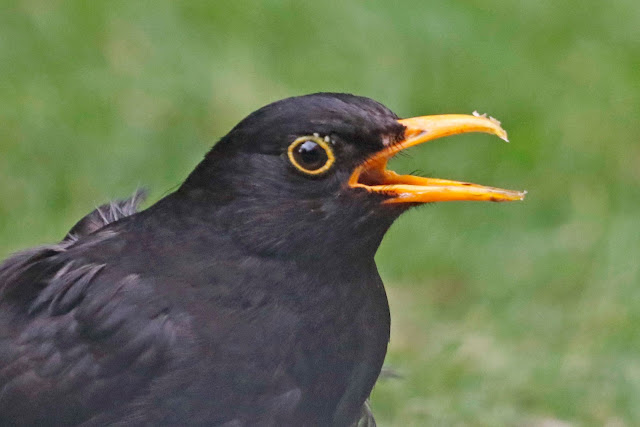“Large clouds of painted lady butterflies are being spotted
across the UK and Ireland - and experts believe we are seeing a mass emergence
that happens every 10 years.” BBC News
“Millions of painted lady butterflies seen across UK in
once-in-a-decade phenomenon.” The Independent
“'Millions' of Painted Lady butterflies set to arrive in the
UK this summer.” The Daily Telegraph
“Prepare for invasion of the painted ladies.” The Times
“Millions of Painted Lady butterflies expected to start
arriving in Britain.” Reuters
“Britons urged to help record influx of painted lady
butterflies.” The Guardian
And many have been seen up and down the country, but up and until today they have been far and few between around Four Marks, until today.
On getting home this afternoon and wandering into the garden, I noticed a large butterfly flying forcefully around the garden, and heading for the row of buddleia that are in my neighbours garden, but the branches and flower heads extend well into mine. It settled on the flower head, and although I was 99 percent certain of the identification, on settling all was confirmed, the first Painted Lady of the year.
It then became clear that there was not just one, but two, the other butterfly closer and lower down.
This was a pristine individual, and probably not one of the recent "invasion" but the offspring of one of the earlier arrivals in the year, freshly emerged.
They are a very photogenic butterfly, and when settled on buddleia allow you to get very close.
Another then appeared making the total now three Painted Lady's in the garden, the highest number I have ever had. The third individual was a lot paler and with some damage on the rear wings, but still able to strongly fly and duel with one of the others.
Of the three two were pale and showed some damage in the wing, while the other was much brighter coloured and with perfect wings.
All these photographs were taken with my new Canon M100 mirrorless camera with a 55-200 mm lens. I have been very impressed with the quality of shot produced.
With the sun out I decided to go out for an early evening walk, it has been some that I haven't done for some while. From the house we walked down Lymington Bottom and then up Brislands Lane towards Old Down Wood. The sun at this point then disappeared behind the building clouds, its always the way.
The entrance to Old Down looks very overgrown, and back to how I remember it when I first started writing this blog back in 2012.
We took the main path through the wood to the crossroads. The sun had returned and was filtering through the leaves on the beach trees, turning the bracken and bramble below a silvery white.
The paths through the wood have lost the openess and on either side bramble and bracken has taken up space as the trees have been removed. Light is always a premium within the wood at this time of year due to the canopy, but where it does get through now there has been a explosion of bracken and the crawling bramble bushes. In one open place a Comma flew around before landing on the leaf of a Hazel tree.
As we headed to the exit on Swellinghill a single worn and pale Meadow Brown arose from the long grasses and made its way across the bracken.
Leaving the wood we stopped at the pond. At the back of the pond a female Mallard with two juvenile ducklings spotted us and swam towards us in the hope of maybe some food.
Strangely this was a significant sighting here on the pond. I have seen young ducklings before, but they have never managed to survive. These two are the first that I can recall ever reaching this size.
The rest of the walk was completed without anything of further interest, however back home, later in the evening a male Sparrowhawk zipped through the garden. Fortunately for all our song birds it was not successful, but a warning that they are about.
Hopefully there will be more Painted Ladies about, and maybe a few Red Admirals and Clouded Yellows, which would be nice


































































